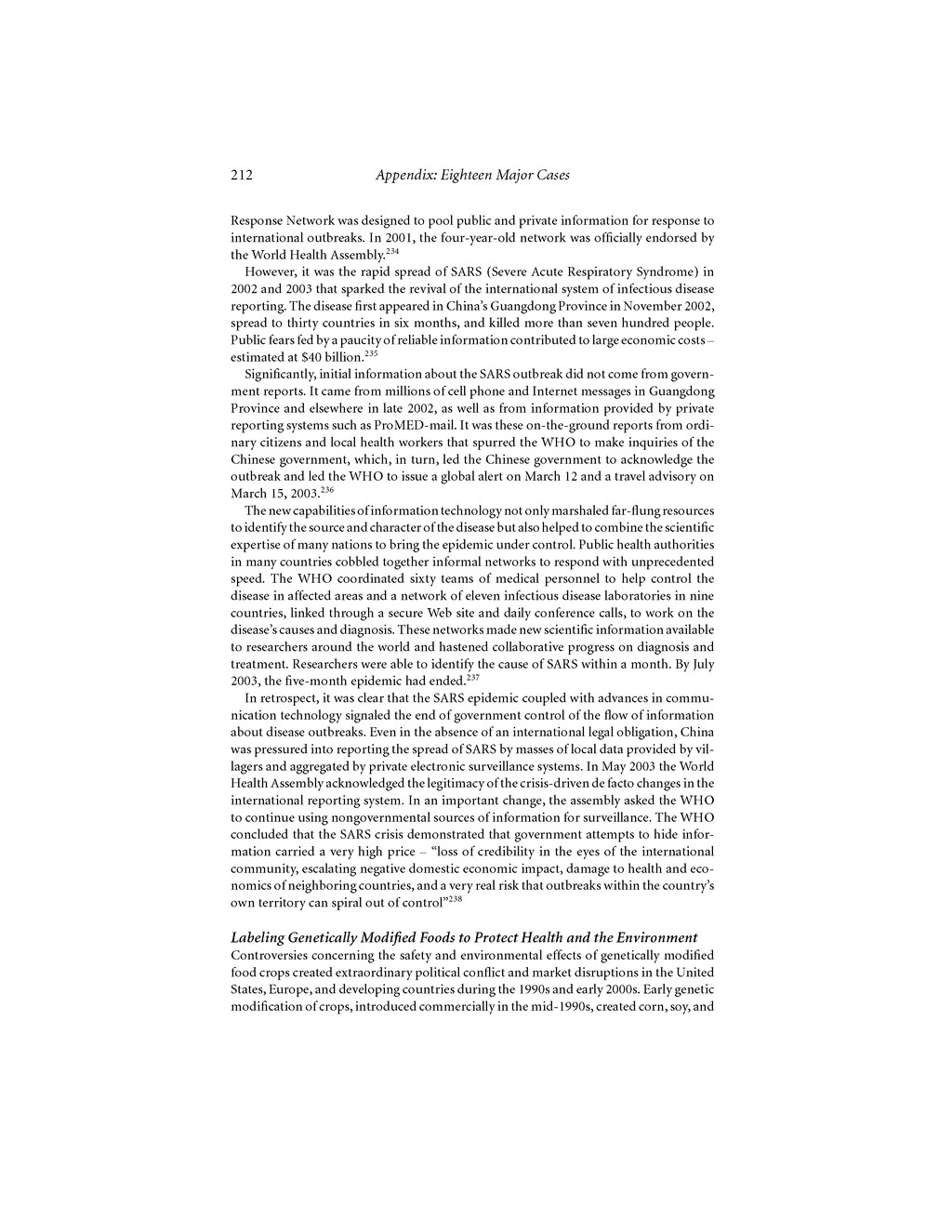Response Network was designed to pool public and private information for response to international outbreaks. In 2001, the four-year-old network was officially endorsed by the World Health Assembly. 234
However, it was the rapid spread of SARS (Severe Acute Respiratory Syndrome) in 2002 and 2003 that sparked the revival of the international system of infectious disease reporting. The disease first appeared in China’s Guangdong Province in November 2002, spread to thirty countries in six months, and killed more than seven hundred people. Public fears fed by a paucity of reliable information contributed to large economic costs – estimated at $40 billion. 235
Significantly, initial information about the SARS outbreak did not come from government reports. It came from millions of cell phone and Internet messages in Guangdong Province and elsewhere in late 2002, as well as from information provided by private reporting systems such as ProMED-mail. It was these on-the-ground reports from ordinary citizens and local health workers that spurred the WHO to make inquiries of the Chinese government, which, in turn, led the Chinese government to acknowledge the outbreak and led the WHO to issue a global alert on March 12 and a travel advisory on March 15, 2003. 236
The new capabilities of information technology not only marshaled far-flung resources to identify the source and character of the disease but also helped to combine the scientific expertise of many nations to bring the epidemic under control. Public health authorities in many countries cobbled together informal networks to respond with unprecedented speed. The WHO coordinated sixty teams of medical personnel to help control the disease in affected areas and a network of eleven infectious disease laboratories in nine countries, linked through a secure Web site and daily conference calls, to work on the disease’s causes and diagnosis. These networks made new scientific information available to researchers around the world and hastened collaborative progress on diagnosis and treatment. Researchers were able to identify the cause of SARS within a month. By July 2003, the five-month epidemic had ended. 237
In retrospect, it was clear that the SARS epidemic coupled with advances in communication technology signaled the end of government control of the flow of information about disease outbreaks. Even in the absence of an international legal obligation, China was pressured into reporting the spread of SARS by masses of local data provided by villagers and aggregated by private electronic surveillance systems. In May 2003 the World Health Assembly acknowledged the legitimacy of the crisis-driven de facto changes in the international reporting system. In an important change, the assembly asked the WHO to continue using nongovernmental sources of information for sur veillance. The WHO concluded that the SARS crisis demonstrated that government attempts to hide information carried a very high price – “loss of credibility in the eyes of the international community, escalating negative domestic economic impact, damage to health and economics of neighboring countries, and a very real risk that outbreaks within the country’s own territory can spiral out of control” 238
Labeling Genetically Modified Foods to Protect Health and the Environment
Controversies concerning the safety and environmental effects of genetically modified food crops created extraordinary political conflict and market disruptions in the United States, Europe, and developing countries during the 1990s and early 2000s. Early genetic modification of crops, introduced commercially in the mid-1990s, created corn, soy, and
